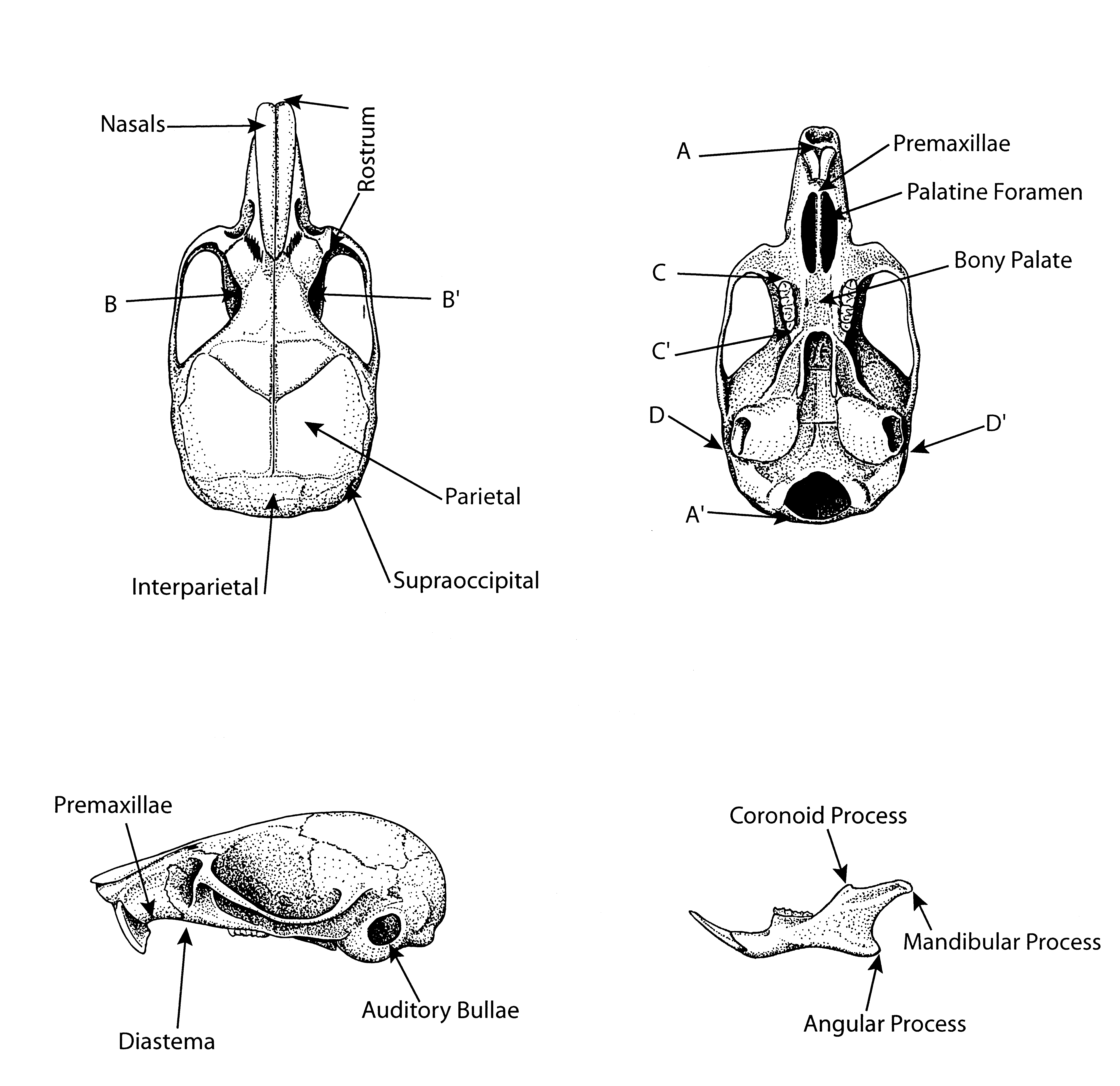APPENDIX 6
STANDARD MEASUREMENTS OF STUDY SPECIMENS
Each species account in this book includes under the heading "Description" a number of standard measurements that may be helpful in identifying species in the field or specimens in the hand. Measurements are usually recorded in millimeters and weights in grams, although measurements for larger species may be recorded in meters and weights in kilograms.
Explanations of the most common standard measurements for mammals are as follows:
Total length—length from tip of nose pad to tip of fleshy part of tail, excluding
hairs that project beyond tip.
Length of tail—with tail held at right angle to body, the length from
bend on back to tip of fleshy part of tail, excluding hairs that project beyond tip.
Length of hind foot—distance from tip of longest claw to heel.
Height of ear from notch—distance from notch at front base of ear to
distalmost border of fleshy part of ear.
Some mammal descriptions include other measurements appropriate for the species, such as length of the forearm of bats; length of the metatarsal gland of ungulates; height at shoulder of large mammals such as bears and artiodactyls; and length of pectoral fin, height of dorsal fin, and girth of cetaceans.
Measurements of the skull are also useful for identifying specimens, particularly those of small mammals. Figure 369 illustrates some of the more common identifying features of the skull and selected standard measurements.

Figure 369. Views of the skull and lower jaw of Lacey's white-ankled deermouse, Peromyscus laceianus, showing bones and indicating the measurements used in identifying species: point A to A′, condylobasal length; point B to B′, interorbital breadth; point C to C′, length of molar tooth row; and point D to D′, mastoidal breadth.
From The Mammals of Texas, Seventh Edition by David J. Schmidly and Robert D. Bradley, copyright © 1994, 2004, 2016. Courtesy of the University of Texas Press.
Natural Science Research Laboratory
-
Address
Museum of Texas Tech University, 3301 4th street, Lubbock, TX 79409 -
Phone
806.742.2486 -
Email
nsrl.museum@ttu.edu

